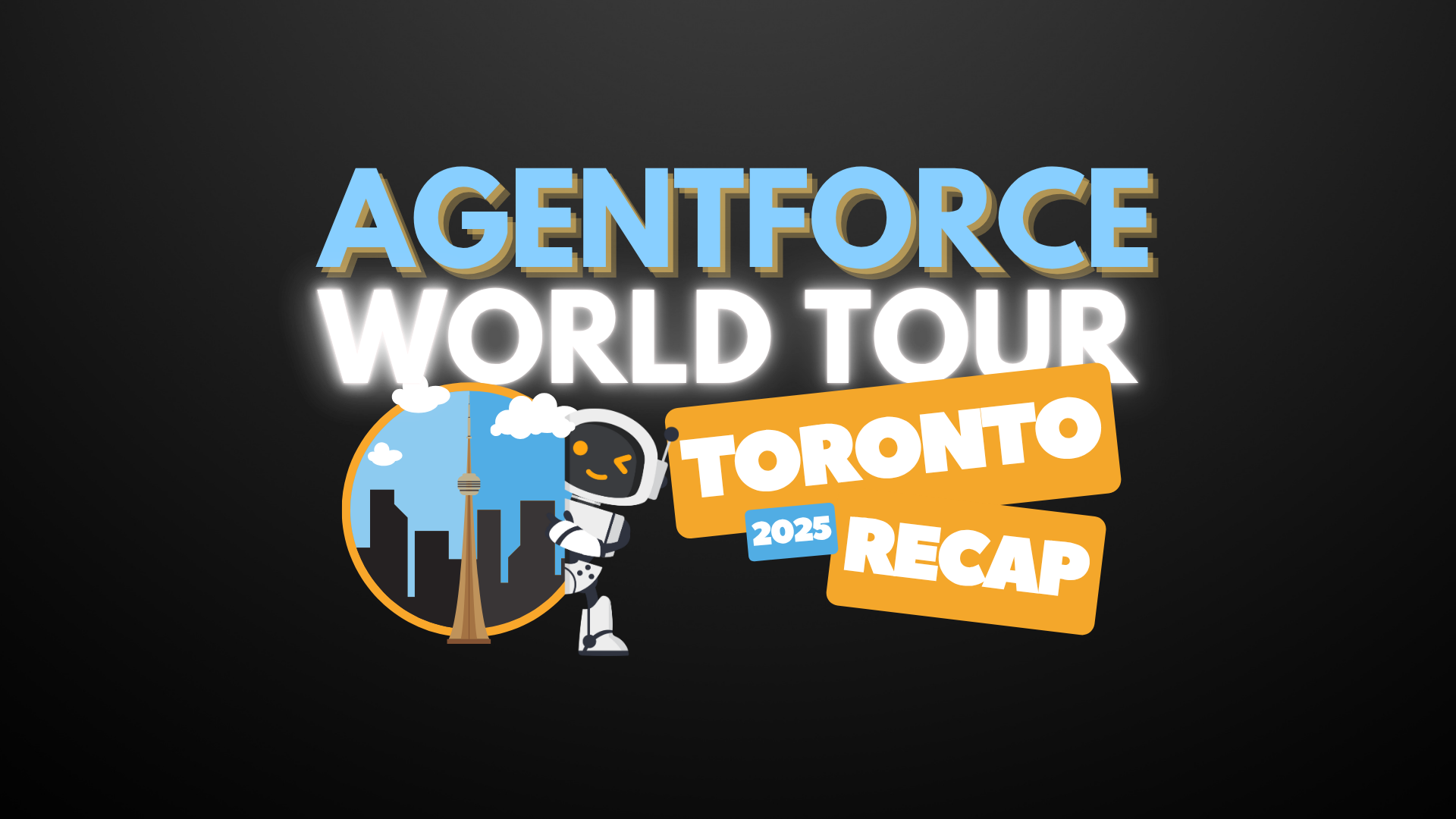We wrapped another World Tour this week and while the team expected the usual rhythm, this one hit a little differently. Not in a dramatic way, but in a way that made us pause and realize just how far our work has come since World Tour in December, especially with more Agentforce implementations (among other Salesforce Cloud projects) under our belt.
The hype’s still out there as expected, with AI showing up across more and more Salesforce tools. But our perspective has shifted. It’s more grounded now, shaped by real, hands-on experience. After months of trying, testing, tweaking, and figuring out what actually works for our clients, the conversations felt different. Less theoretical, more familiar. Like we’re not just chasing ideas anymore; we’re building on what we’ve already learned.
Lane Four was back as a booth sponsor for the second year in a row. We sent a mix of architects, partnership leads, and marketing voices and every one of us walked away with something.
Now Let’s Hear From the Team!

Pete, Director of Architecture
Pete noticed a clear shift from last year. “Less art of the possible, more improving today,” he put it. While last year had its share of bold predictions—think “replace 80% of your workforce with Agentforce” (his words, slightly exaggerated)—this time around felt different.
The sessions leaned into what’s being focused on now. It was clear that many people had actually gotten hands-on some of the Agentforce features for the first time in the past ~6 months. “Rather than nearly exclusively hypotheticals, we were able to actually discuss challenges that people were having today. There were also far fewer people trying to jump straight to the ‘run’ stage in the form of completely autonomous customer facing agents replacing whole workflows. Many more were talking about internal PoCs as a first step. A lot of conversations were had around ‘what would be a realistic goal to have this quarter?’” Pete said.
If last year was all vision boards and whiteboards, this one was hands-in-the-dirt. Practical. Tangible. And honestly, more productive.
Meg, Director of Partnerships & Accounts
Meg echoed the energy: more use cases, more real talk, and a lot of familiar faces. “It’s always great to walk around and run into old clients, Salesforce reps, former coworkers,” she said. The conference floor didn’t just feel buzzy; it felt relational. Like the ecosystem was growing in all the right ways.


Quinten, Director of Partnerships & Accounts
Quinten said it simply: “It’s amazing to be in rooms where people are seriously asking how AI can actually help them, rather than tossing it around like a magic buzzword.”
A lot of our conversations circled around internal use cases—smart lead routing, AI-assisted support summaries, embedded agents in Sales Cloud. Not flashy, but foundational. That’s where the real, near-term impact is happening.
And the curiosity? It’s everywhere. People aren’t wondering if AI belongs in RevOps anymore—they’re asking what a smarter assistant can do for their team right now.
Jamie, Director of Partnerships & Accounts
Jamie also pointed out something simple but powerful: even if some great conversations happen by chance, prep and planning greatly impact the value of engagements at conferences like World Tour. Whether it was a booth visit or a relaxed Happy Hour chat, the most productive interactions came from a little prep work.
And while the booth welcomed a wide range of visitors (some casually curious, others deep in the weeds of implementation projects), it was energizing to see just how many different roles and industries were engaging with AI through a Salesforce lens or Salesforce tools overall. Sifting through those conversations to find real alignment can sometimes be tough, but it’s part of the fun, especially when the interest is so high across the board.
What stood out most? Everyone’s thinking about AI. Jamie noticed that as people gain more context (especially hands-on from partners like Lane Four), internal use cases are leading the way; similar to Quinten’s feedback as well. From workflow automation to agent-assisted sales tasks, the smart area to start may just be improving what’s what’s going on in-house.


Lyza-Jane, Content Marketing Manager
Between Salesforce partners, long-time clients, and new faces in the mix, it was a whirlwind of reconnecting and reflecting. “You don’t always stop to feel proud in the day-to-day grind—you’re just focused on pushing forward,” Lyza-Jane said. “But then someone remembers a conversation from six months ago; what we were working on, where we were as a company, and you stop for a second and realize how far things have come. Most of it, we’ve done side-by-side with our partners. That’s cool to see.”
Mike, Strategic Advisor
Mike emphasized how much the event layout and design mattered this year. Lane Four’s booth presence intentionally created an easy “in” for meaningful conversations by our displays and people reflecting our unique point-of-views and experience. People saw us from across the floor and stopped by not just because of curiosity, but because they might’ve heard something from a peer, from a client, from a Salesforce rep.
He also highlights how valuable the more casual, off-booth settings were for sparking honest conversations; like at our Happy Hour co-hosted with our Salesforce partners. When prospects and partners get to hear directly from current clients, those real-world stories do a lot of heavy lifting.

So… what’s next?
Real tech, grounded strategy. If you’re in RevOps, SalesOps, or just trying to make your Salesforce org less of a mystery and more of an actual revenue machine, here’s what this means:
- Start where you are. Evaluate what you have. And use it properly.
- Internal AI use cases often give the best return early on.
- Focus on tools that make your team faster and smarter.
- Don’t chase perfection. Run that pilot project.
- And when in doubt? Partner with folks who’ve been in the thick of it. That’s us.
Agentforce Toronto 2025 didn’t sell us on a shiny future as much as it reminded us the future’s already here…it’s just unevenly adopted. And it’s worth slowing down to ask: What do we actually need? What’s realistic to build this quarter?
If you’re wondering where AI fits in your RevOps toolkit, let’s chat.
